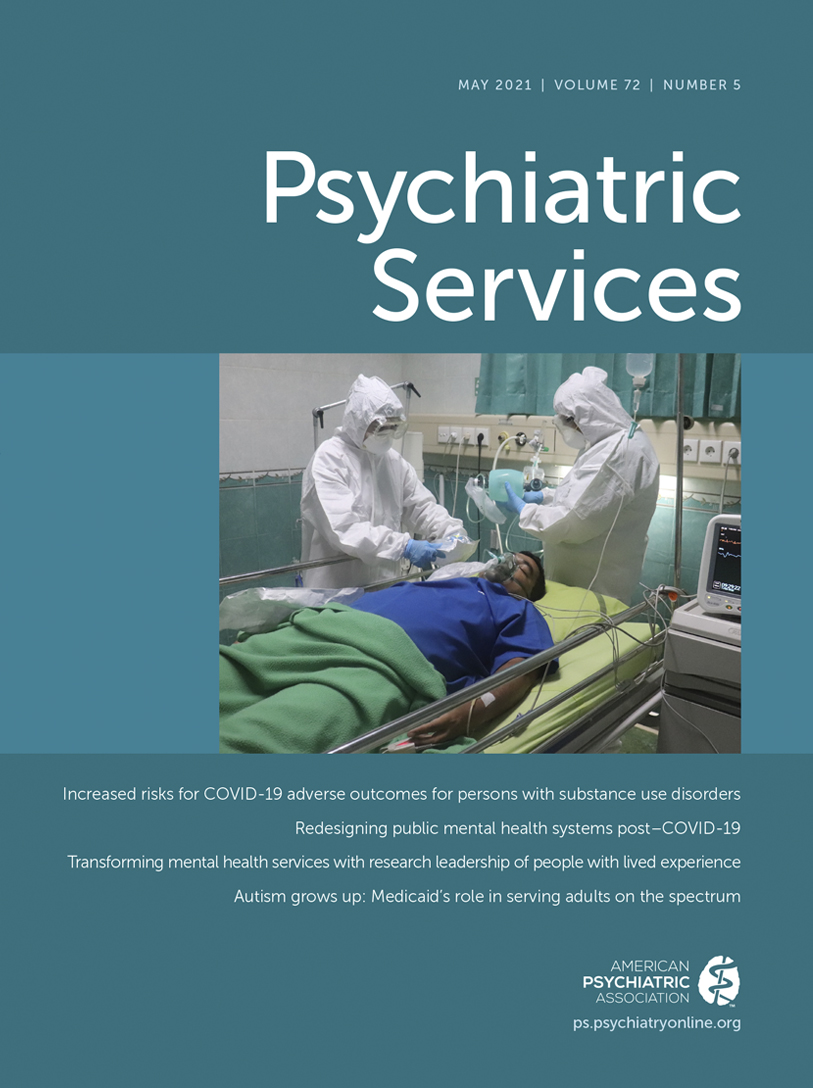Psychiatric Hospitalizations Before and After Firearm Reform in Connecticut
TO THE EDITOR: Connecticut passed firearm reform in response to the Sandy Hook Elementary School shooting on December 14, 2012. A major provision of the law that became effective October 1, 2013, prohibits gun ownership by individuals who have been voluntarily admitted to a hospital for psychiatric diagnoses (including dual diagnosis but not primary substance abuse) (1). Before this law was passed, firearm rights could be suspended only for individuals who were involuntarily admitted. This provision generated concern in the psychiatric community that to preserve their firearm rights, people would not seek care (2, 3). These concerns have not been empirically tested to our knowledge. We compared trends in hospitalizations and emergency department (ED) visits, as a gateway to inpatient services, before and after the law.
Methods
Publicly available rates for psychiatric diagnoses (excluding primary diagnosis of substance abuse) in nonfederal hospitals in Connecticut were obtained for the period 2009–2017 (4). All years are reported from October 1 of the previous year, hence 2013 is reported before the law. Major diagnostic category 19 diagnoses were based on psychiatric ICD-9 and ICD-10-CM codes. Rates were normalized per 100,000 of the total general state population to account for any population changes. We compared rates before (2009–2013) and after (2014–2017) the law took effect, using a change-point analysis with Poisson regression. The model included year (2009–2017) as a continuous predictor and period (pre- versus postlaw) as an indicator variable. Rates and 95% confidence intervals (CIs) were estimated from the model on the basis of the corresponding linear combination of each coefficient estimate. Slopes were estimated from the model before and after law enactment and then exponentiated to produce rate ratios (RRs) and associated 95% CIs to represent the change in rates from one year to the next. Informed consent and ethics committee reviews were not required for this work.
Results
Estimated yearly rates of psychiatric inpatient discharge rates are depicted in an online supplement. There was a significant interaction (Wald χ2=20.20, df=1, p<0.01) between year and period where rates were generally flat prior to law enactment (β=–0.002±0.002; RR=0.99, 95% CI=0.99–1.00) compared with a significant decrease in rates of ∼2% per year after law enactment (β=–0.017±0.003; RR=0.98, 95% CI=0.98–0.99). Conversely, in the ED a significant year × period interaction was observed (Wald χ2=407.20, df=1, p<0.001), where the significant increase in rates during each period was greater after the enactment of the law (see online supplement). Specifically, visits increased approximately 3% per year before (β=0.029±0.001; RR=1.03, 95% CI=1.03–1.03) and approximately 8% per year after (β=0.074±0.002; RR=1.08, 95% CI=1.07–1.08) the law was enacted.
Discussion
Inpatient psychiatric discharge rates were significantly lower after the law, but it is important to note that potential confounds (e.g., bed capacity) may explain these results. Supporting this interpretation, ED visit rates for psychiatric diagnoses increased during the same period. Limitations include lack of data in comparison states, rates of individual gun ownership, and voluntary versus involuntary admissions. Nevertheless, these findings show the importance of examining the effect of gun laws on the use of psychiatric services to help inform gun control policies.
1 Act of Oct 1, 2013, No 13-3, 2013 Conn Pub Acts. Oct 1, 2013 . https://www.cga.ct.gov/2013/ACT/PA/2013PA-00003-R00SB-01160-PA.htm Google Scholar
2 : Mental illness and new gun law reforms: the promise and peril of crisis-driven policy . JAMA 2013 ; 309 : 1233 – 1234 Crossref, Medline, Google Scholar
3 : Gun violence: psychiatry, risk assessment, and social policy . J Am Acad Psychiatry Law 2013 ; 41 : 337 – 343 Medline, Google Scholar
4 Rate of mental health emergency department visits in Connecticut. Hartford, Connecticut Public Health Data Explorer, 2017 . https://stateofhealth.ct.gov/HCT2020/MHMentalHealthDisorders Google Scholar



